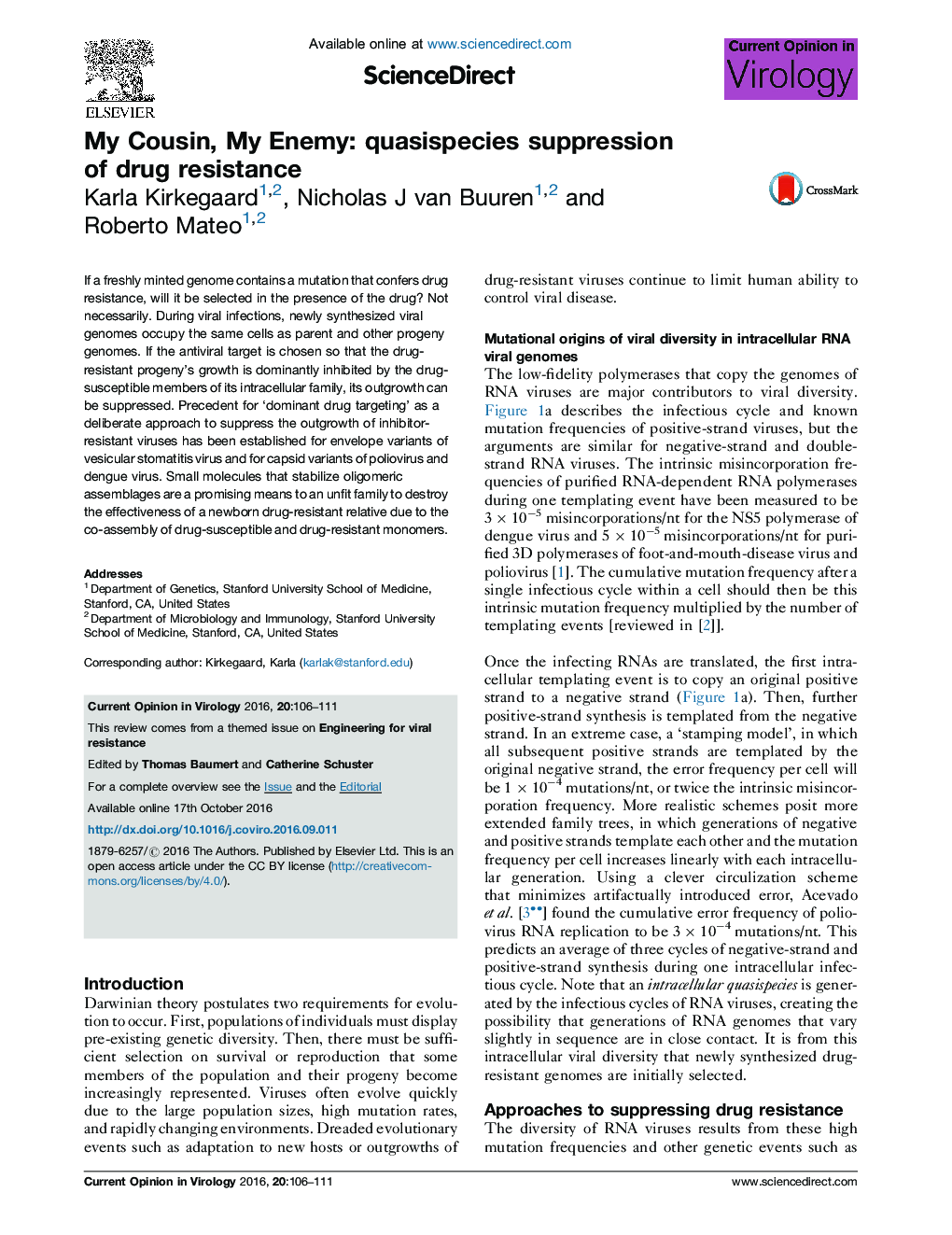| Article ID | Journal | Published Year | Pages | File Type |
|---|---|---|---|---|
| 8506727 | Current Opinion in Virology | 2016 | 6 Pages |
Abstract
If a freshly minted genome contains a mutation that confers drug resistance, will it be selected in the presence of the drug? Not necessarily. During viral infections, newly synthesized viral genomes occupy the same cells as parent and other progeny genomes. If the antiviral target is chosen so that the drug-resistant progeny's growth is dominantly inhibited by the drug-susceptible members of its intracellular family, its outgrowth can be suppressed. Precedent for 'dominant drug targeting' as a deliberate approach to suppress the outgrowth of inhibitor-resistant viruses has been established for envelope variants of vesicular stomatitis virus and for capsid variants of poliovirus and dengue virus. Small molecules that stabilize oligomeric assemblages are a promising means to an unfit family to destroy the effectiveness of a newborn drug-resistant relative due to the co-assembly of drug-susceptible and drug-resistant monomers.
Related Topics
Life Sciences
Immunology and Microbiology
Virology
Authors
Karla Kirkegaard, Nicholas J. van Buuren, Roberto Mateo,
